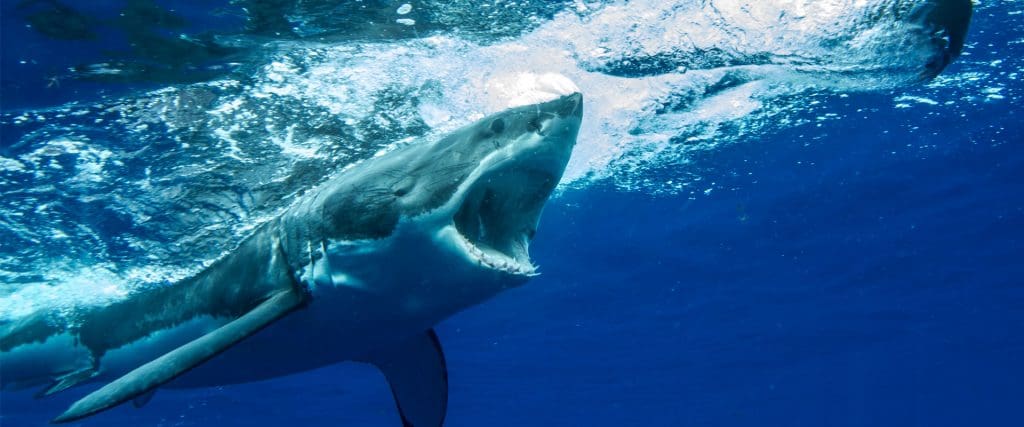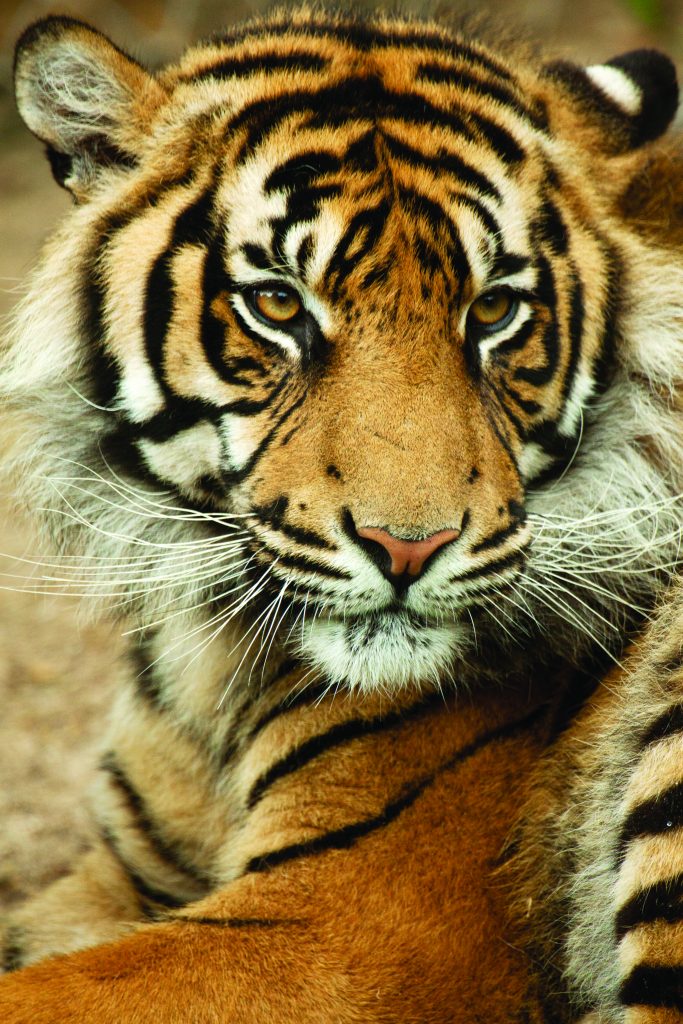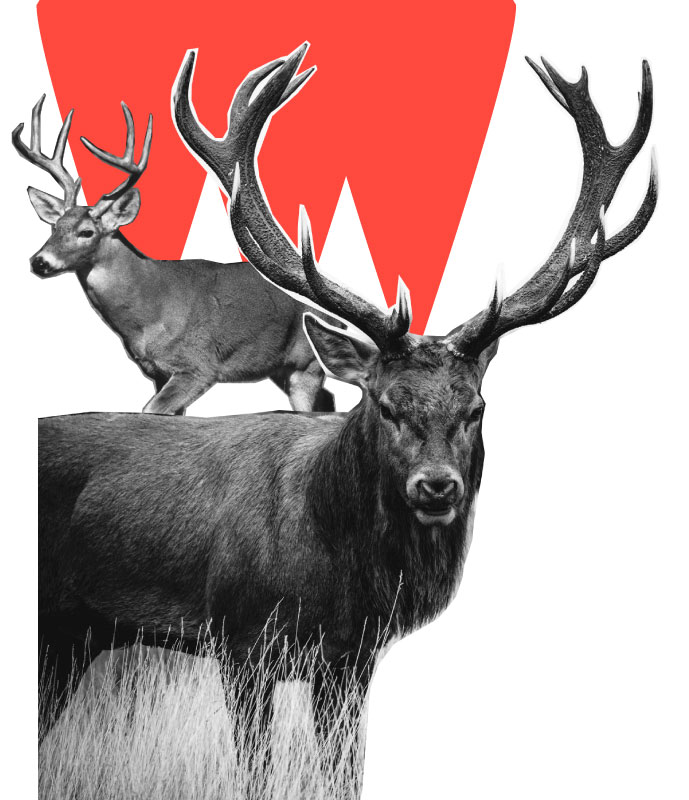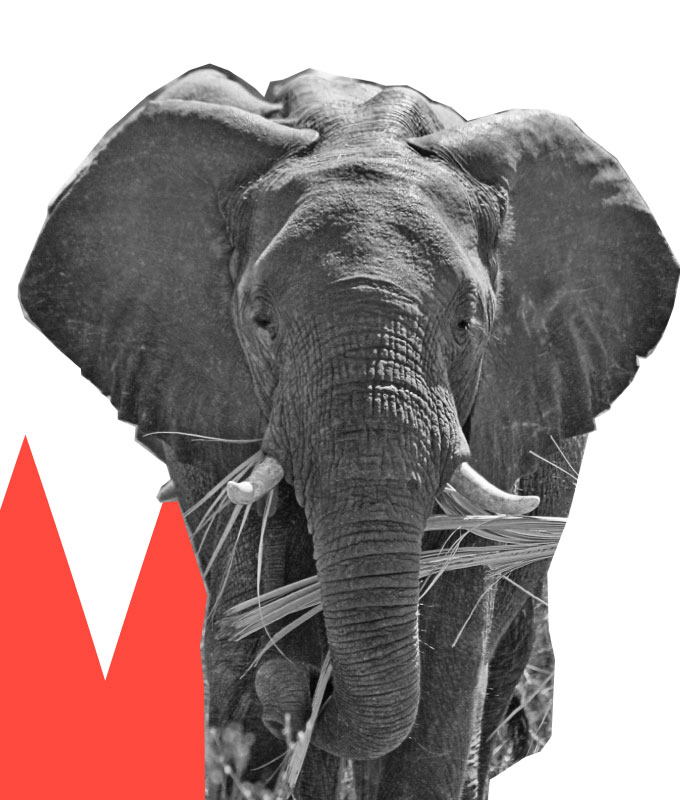11 Deadliest Animals On The Planet & How to Survive Them
The animal kingdom is a strange and wonderful place. From architects to mimes, assassins to philanderers, each animal has its own niche, a role and place. While we regularly encounter cats, dogs, birds and bugs, our chances of seeing dangerous animals are usually limited to visiting the zoo or watching The Discovery Channel. But while most of us have justified fears of creepy crawlies, poisonous critters and hulking beasts, it’s surprising to know that some of the animals that kill us the most frequently are much more widespread than one might think. Fortunately, M2 is here to tell you what the threat is and what you can do to keep yourself in one piece – or at least get out alive.
Great White Shark
Description: Ever since that one Steven Spielberg film, the general population has been instilled an almost irrational fear of sharks. While it is natural to fear an apex predator that has been engineered through millions of years of evolution to be the perfect killing machine, we’re just not their type. The Great White Shark is without a doubt an intimidating beast. Measuring up to 5 metres in length, weighing some 3 tonnes with around 300 serrated teeth arranged row upon row, they have been recorded to swim as fast as 40kph. There have also been documented cases of Great White Sharks breaching the surface, usually with a hapless seal in its jaws. Though the aggressive behaviour and man-eating habits of Great Whites was exaggerated in Jaws, the sharks are however responsible for the majority of attacks on people – but the average number of fatalities is still rather low. Of the 66 recorded Great White Shark attacks from 2000-2009, 13 were fatal which averages to just over one fatality a year. Even with that in mind, what’s wrong swimming in a pool?
Danger Factor: Great White attacks are usually provoked and result from the shark mistaking a human for a seal. These attacks are more common with surfers, as their silhouette is similar to a large, albeit elongated, seal. Fortunately, most Great Whites employ a bite-and-see tactic whereby they ‘sample’ the potential prey only to lose interest.
Survival ‘Tactics: Prevention is key. Avoid swimming out to sea in the early morning and late afternoon; sharks tend to feed during those times, and the poor visibility doesn’t make things easier. If you’re bleeding – even from a minor cut – get out of the water. If for some reason you do get attacked, hit the nose and eyes and head to shore or the nearest boat.
Full Name: Carcharadon carcharias Location(s): Global except Arctic and Antarctic waters… And land. Diet: Tuna, rays, seals, turtles
Tiger
Description: The notion of the lion being king of the jungle is wrong on a variety of levels. Most obvious is the fact that lion habitats are usually limited to dry lands such as grasslands and scrub. It’s the tigers that reside in jungles, where their characteristic black stripes offer surprising camouflage against the thick foliage. Tigers kill an estimated 100 people annually, though that number was much higher in years past as a result of larger tiger populations and greater distances between tiger habitats and human settlements. Unlike most individuals in the feline family, tigers don’t mind the water and are adept swimmers. Their stealth is unparalleled and will stalk prey for extended periods with a low profile, silent footing and will strike without mercy when the opportunity presents itself.
Danger Factor: Tigers are predominantly solitary hunters for a reason: they are very, very good at it. They can climb trees, swim, and stalk prey with such speed and stealth that by the time you hear that rustling bush behind you it’s probably too late.
Survival Tactics: If you’re fortunate enough to see a tiger in the wild, do not lose sight of it. Tigers, particularly the Bengals, prefer to attack from behind.
Full name: Parathera tigris (various) Danger Type: Blood loss from bites and lacerations Location(s): Eastern and Southeast Asia Diet: Rabbits, deer, humans (rarely)
Deer
Description: It might be a surprise to see deer in this list. While stags do indeed possess antlers that can fatally gore a person, the majority of deaths from deer are indirect – car and truck drivers on highways swerving out of the way of these critters. While crossing a highway at night, a deer (along with a number of other animals) exhibit a freeze response when seeing bright lights. It’s the familiar whole ‘deer caught in the headlights’ idiom, and unfortunately there are around 120 annual deaths that result from deer crossing the wrong road at the wrong time.
Danger Factor: As with all vehicular accidents: the faster you go, the bigger the mess.
Survival Tactics: Be mindful of wooded or mountainous areas known to have deer, especially when traversing through roads with poor visibility.
Full name: Cervidae family Danger Type: Road accidents Location(s): Worldwide except Antarch Diet: Forest/bush vegetation
African Elephant
Description: At 4m tall and weighing 7 tonnes, African elephants are the largest land animals on the planet. Though mostly docile, an elephant on a rampage is no laughing matter and they are responsible for around 500 deaths a year. The exact causes of elephant aggression are largely unknown, and as such elephant attacks are considered unpredictable – they are known to spontaneously trample keepers that have been caring for them in zoos for years. In the wild, elephants occasionally enter villages and cause mayhem by crushing people and inflicting substantial damage to buildings and foliage.
Danger Factor: Their unpredictable temperament suggests it’s best to appreciate these magnificent animals from a distance.
Survival Tactics: There are a number of signs to look for if an elephant is about to charge. If the elephant in question has its ears pressed flat against its head, makes loud trumpting calls and swings its front legs, make a run for it. When running, head downwind as to minimise the odds of the elephant sniffing you out.
Full name: Loxodonta africana Danger Type: Blunt forced trauma Location: Scattered throughout the African continent Diet: Various indigenous foliage
Saltwater Crocodile

Description: The saltwater crocodile is the world’s largest reptile. It’s no surprise they made the list really, as annual death rates range from 1,000 to 2,000. Not only do they have absolutely no fear of humans, they have been sighted in open waters hundreds of miles away from the nearest coast. They attack boats, eat emus, catch bats and even take on sharks. Their efficiency in killing is a combination of stealth, speed, power and technique – like submarines they approach prey silently to strike with surprising speed when the target is within range. Their jaw’s capable of biting down with 255 bars of pressure, which is on par with the bite of a T-Rex. For more relevant comparisons, our bite pressure is a nibble 12 bars, while lions, tigers and hyenas chomp down at 70 bars. As if the sheer bite wasn’t bad enough, saltwater crocs are famous for their ‘death roll’ where they roll around with their prey firmly between their jaws. The rolling action disorients and drowns the prey, and it is this action that has resulted in lost arms and legs for croc attack survivors.
Danger Factor: These critters have the same bite pressure of a freakin’ T-Rex. They also have surprising speed on land.
Survival Tactics: If you are clamped between a croc’s jaws of death, go for the nose or eyes. The eyes are the most sensitive area of the crocodile’s face, and is usually within reach. Do not struggle by aimlessly hitting the face as it might trigger the croc to do the death roll.
Full name: Crocodylus porosus Danger Type: Blood loss from dismemberment; drowning; being eaten Location(s): Southeast Asian coasts; Northern coasts of Australia Diet: Whatever is available
 Cape Buffalo
Cape Buffalo
Description: To get an idea of how badass and dangerous (mostly dangerous) this animal is, the locals call it the Black Death. Weighing in at 900kg, this beast packs a battering ram of a skull flanked by horns that can turn your soft tissues into shish kebabs in an instant. This hyper-aggressive herbivore kill about 200 people per year and has earned its place as one of the most dangerous animals on land. With the exception of a few lone males, they are mostly social animals and move in herds. Their speed and ferocity is well documented, and their social nature has them defending each other in the event of an attack from a predator such as a saltwater crocodile or lion. What’s more, cape buffalos tend to flank the aggressor to ram them from behind.
Danger Factor: Rather than fleeing from danger, cape buffalo are more likely to stand their ground and even attempt to chase away a threat.
Survival Tactics: If by chance you happen across a cape buffalo, maintain a distance and stay downwind. Sudden movements or loud noises are ill-advised.
Full name: Syncerus caffer Danger Type: Blunt force trauma, blood loss Location(s): African Savannahs: Eastern and Southern regions of the African continent Diet: Grass
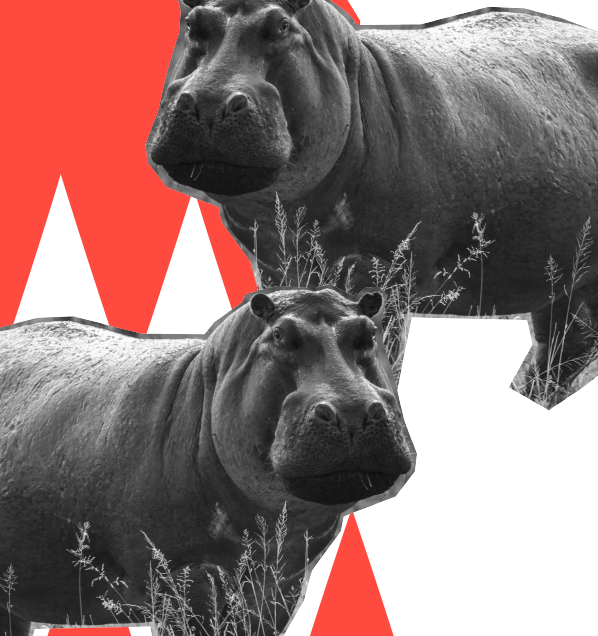 Hippopotamus
Hippopotamus
Description: The hippopotamus is presented in children’s stories as a docile creature, a gentle giant. To a certain extent that is true, as their diet is almost exclusively on low grasses, and their plump physiques and pinkish colouration offsets any sense of danger. Of course, that’s completely ignoring the incredibly aggressive and territorial nature of males, and the fierce defensive nature of females. With an average weight of around 1.5 tonnes and a top running speed of 32kph, being hit by a charging hippo is almost equivalent to being hit by a speeding car. I say ‘almost’, because a car doesn’t usually turn around and maul you with tusks half a metre long. Annual death tolls from hippo attacks in Africa number at around 3,000 a year, and there are noted cases where a hippo takes on a crocodile. And wins. If that’s not enough to convince you how dangerous hippos are, THEY KILL MORE PEOPLE THAN TIGERS.
Danger Factor: Hippos are fiercely territorial and protective of their young. On land, do not stand in between a hippo and the water – they prefer to have direct access to water at all times. On water, do not make physical contact with a hippo or venture too close.
Survival Tactics: Hippos are fast, but their heavy weight limits their endurance. If possible, run through obstacles such as rocks and trees and they’ll either lose sight of you, or tire out. Hopefully both.
Full name: Hippopotamus amphibius Danger Type: Blunt force trauma; blood loss from dismemberment and impaling Location(s): Wetlands of Africa
Diet: Terrestrial grasses; Documented cases of cannibalism and feeding on carrion
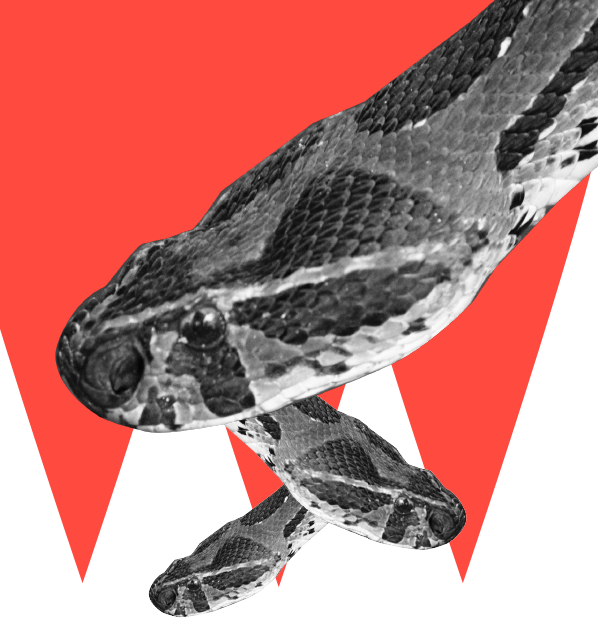 Russell’s Viper
Russell’s Viper
Description: Snakes collectively kill around 50,000 people worldwide. Though the exact number of deaths caused by Russell’s vipers (also known as daboia) is difficult to ascertain, it is one of the Big Four venomous snakes of India. Other members include the Indian Cobra, Common Krait and Saw-Scaled Viper which, along with daboia contribute to some 95 percent of all snakebite-related deaths worldwide. It is common knowledge that out of the Big Four, daboia are responsible for the highest number of bites and deaths.
There are many factors that earn daboia its reputation as the most dangerous snake. Though its venom is not the most potent, its aggressive temperament leads to unprovoked bites, eliciting pain, swelling, vomiting, dizziness, renal failure and blood clots. Coupled with their habitat coinciding with human populations, daboia are unwelcome but inevitable neighbours for many Indians.
Danger Factor: As with many of the animals listed so far, daboia are best avoided outright. If one is sighted do not provoke or attempt to ‘shoo’ away, and distance yourself. Preferably by stepping on the gas and getting the hell away.
Survival Tactics: In the event of a bite, lay down and keep the bite site below the heart level. Remain calm and do not attempt to extract the venom. Seek medical help immediately.
Full name: Daboia russelii Danger Type: Haemotoxic venom Location(s): Indian Subcontinent Diet: Small mammals, scorpions, terrestrial crabs
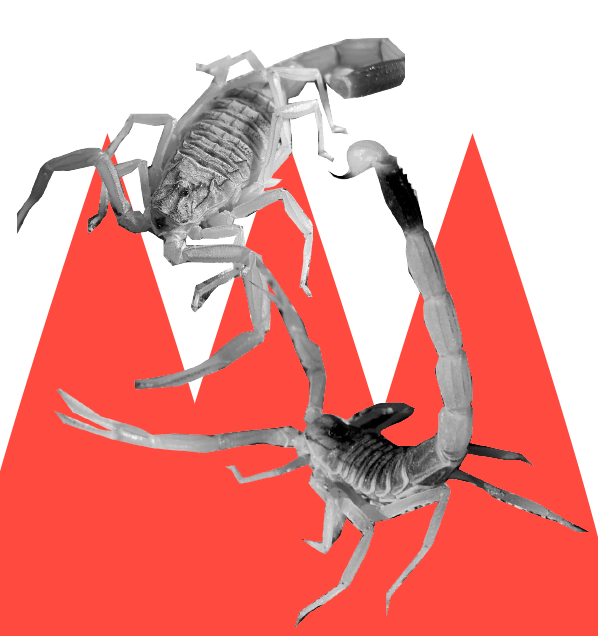 Deathstalker
Deathstalker
Description: Little did you know, scorpions are some of the oldest living things on the planet. Their long presence has resulted in more than 1,500 distinct species spread throughout the world. Despite the large number of species, only about 25 are known to be venomous. Of these few, the deathstalker takes the prize as the biggest killer by accounting for around 75 percent of the 5,000 annual scorpion-related deaths worldwide. As with all venomous animals, children and the elderly are especially at risk. A sting from the deathstalker is not usually fatal to a healthy adult, but the subsequent pain has been described to be ‘extraordinary’. The danger of the deathstalker is compounded by the fact they tend to live where people do, and are often found in shoes, clothes and small crevices. Symptoms resulting from a deathstalker sting include pancreatitis, local swelling, pain, and anaphylactic shock in the event of an allergic reaction. In fatal cases, the cause of death is usually pulmonary oedema – fluid build-up in the space around the lungs that leads to respiratory arrest.
Danger Factor: Though there are anti-venoms available, deathstalker stings usually occur in locations with little access to medical intervention.
Survival Tactics: Since they are only about 6cm in length, they are easy to miss. Always check shoes, cupboards, clothes, cups and drawers.
Full name: Leiurus quinquestriatus Danger Type: Neurotoxins Location(s): Northern Africa; Middle East Diet: Bugs
Tsetse Fly
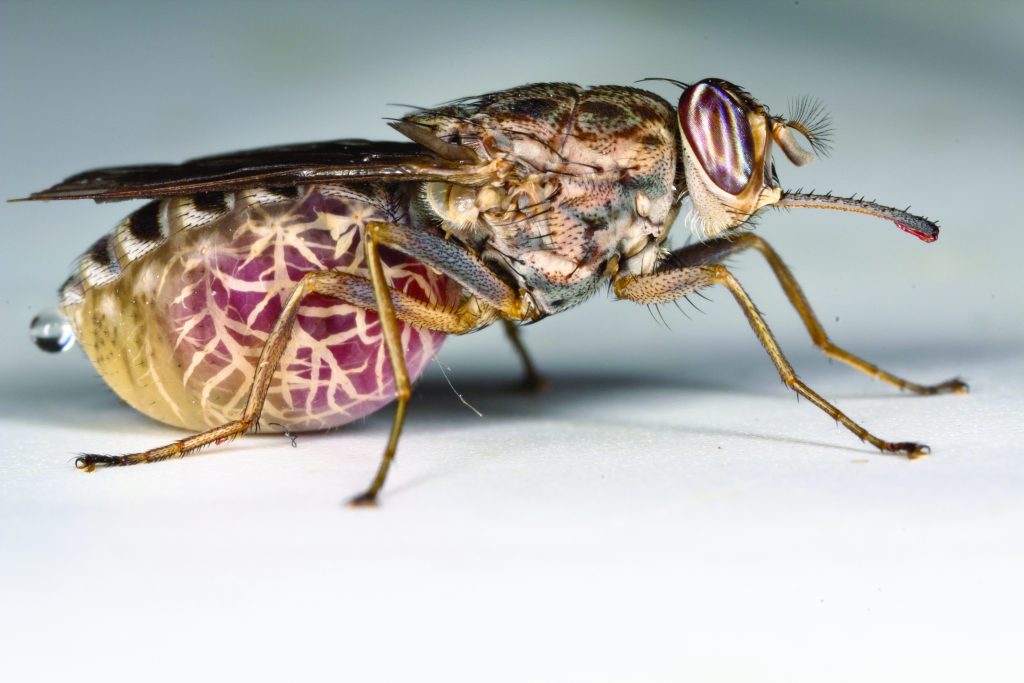
Description: The Tsetse fly is a big bloodsucker that is the vector (carrier) for the Trypanosoma parasites. These microscopic protozoa cause trypanosomiasis, more commonly known as African Sleeping Sickness, an infection characterised by fever, headaches, itching, joint pains, nephropathy, paralysis, coma and death. It is an endemic disease that is fortunately not easily passed from human to human. It is thanks to the Tsetse fly that African Sleeping Sickness is so prevalent, and the annual estimated infection rates number around the 500,000 mark, of which some 80 percent of patients die.
Danger Factor: Early diagnosis and treatment is key, but that can be a problem as infections usually occur in locations with poor medical facilities.
Survival Tactics: Long sleeves, mosquito nets and clothes in brighter shades are the usual defences against the flies. If you’re on safari, consult your guide as he/she will know which areas to avoid. Even if you’re unsure if a bug bite is from a Tsetse, seek medical attention immediately. Better safe and than sorry.
Full name: Glossina genus Danger Type: Bloodborne parasites (African Trypanosomiasis) Location(s): Sub Saharan Africa Diet: Blood
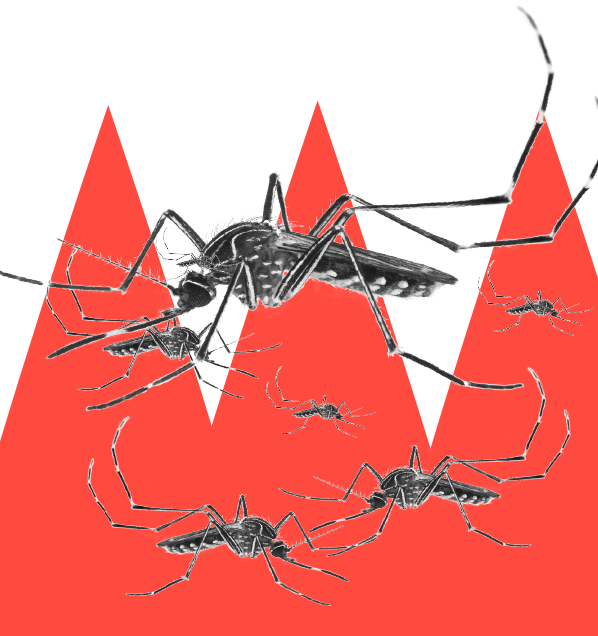 Mosquito
Mosquito
Description: While mosquitoes may be more of a nuisance to us than anything else, for wide parts of the world they are a plague. The female mosquitoes are carriers of the various malarias, which are bloodborne parasites that cause a range of symptoms including headache, fever, joint pain, haemolysis, convulsions, liver failure, coma and death. Annual infection rates of malaria are estimated to be as high as 700 million, resulting in 2 to 3 million deaths.
Danger Factor: They’re quiet, hard to see, and are quite common all over the world.
Survival Tactics: Make use of mosquito nets, wear long sleeves and keep an open mind to mosquito repellents made by locals. Protip: you get used to the odour.
Full name: Anopheles genus (females) Type: Bloodborne parasites (Malaria) Location(s): Tropical regions including sub Saharan Africa, South America and southeast Asia Diet: Blood

